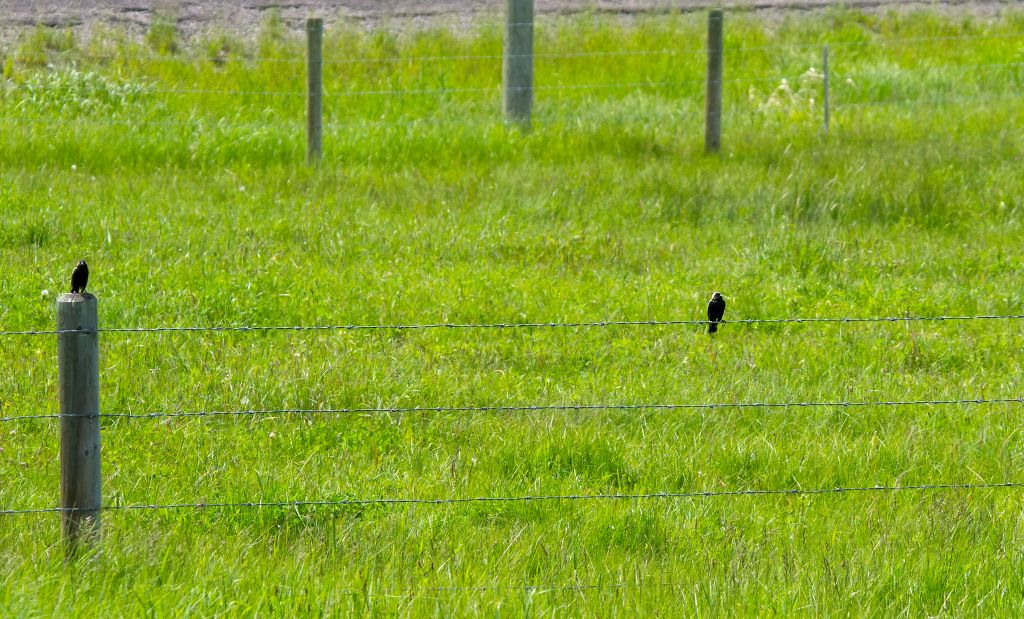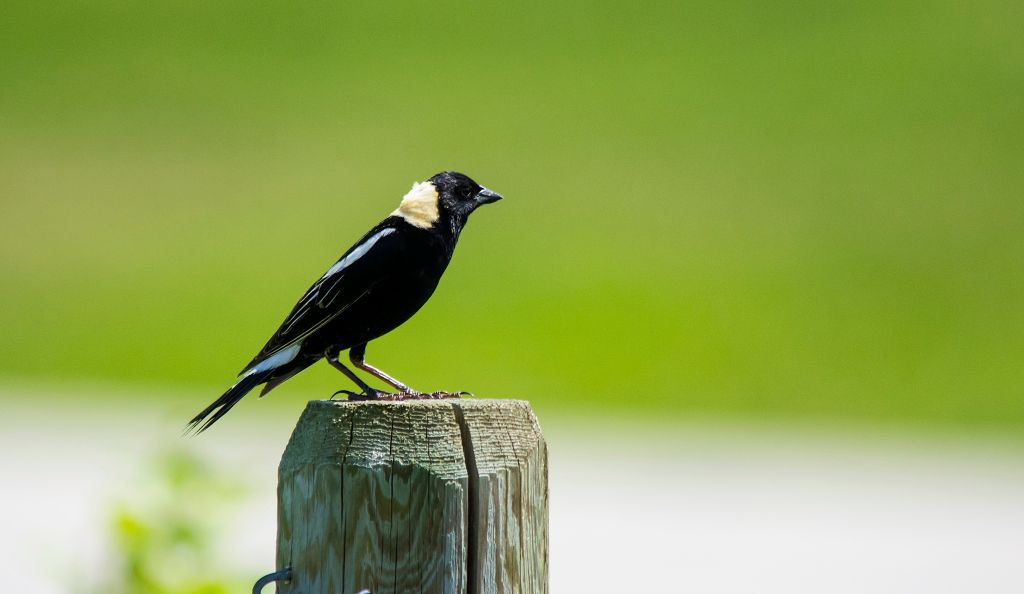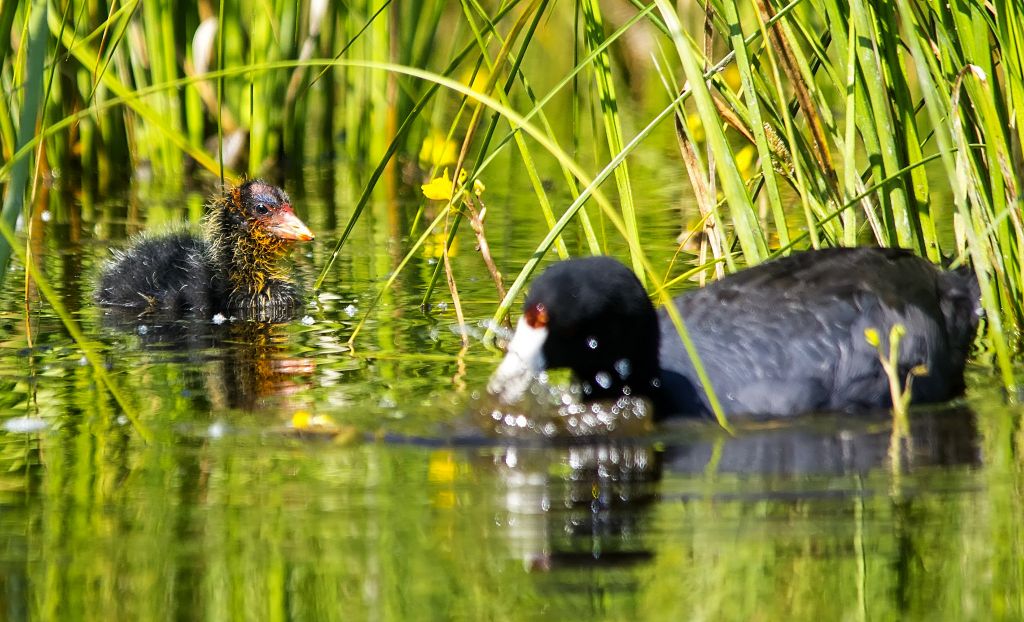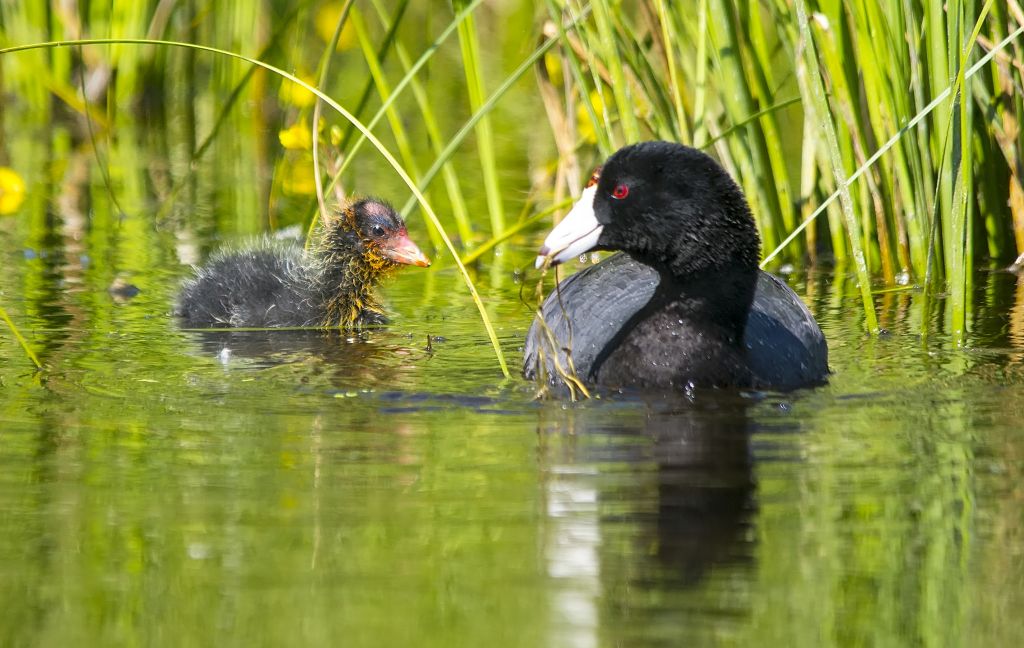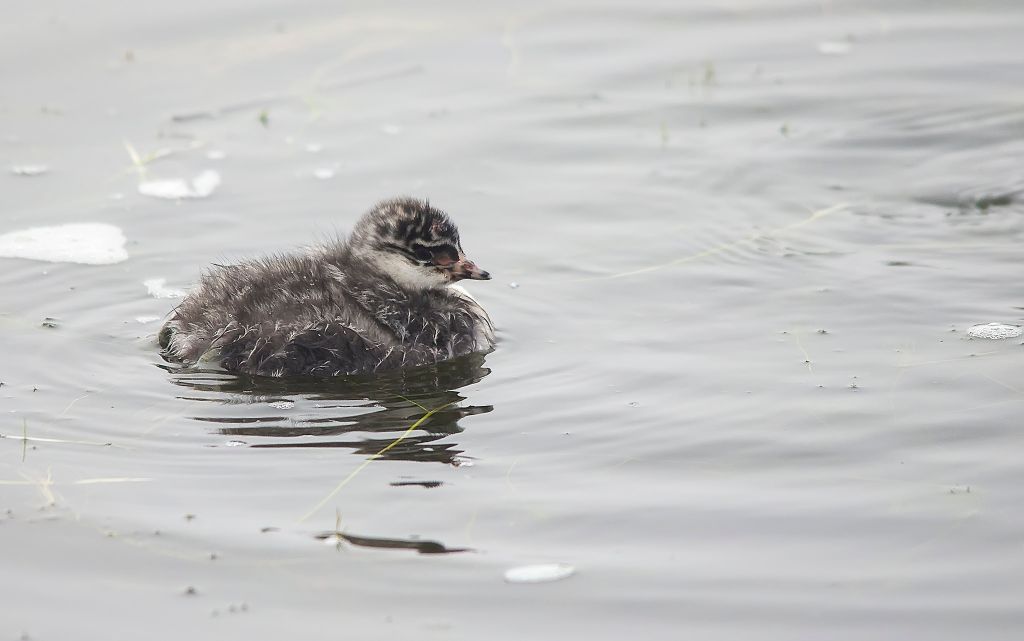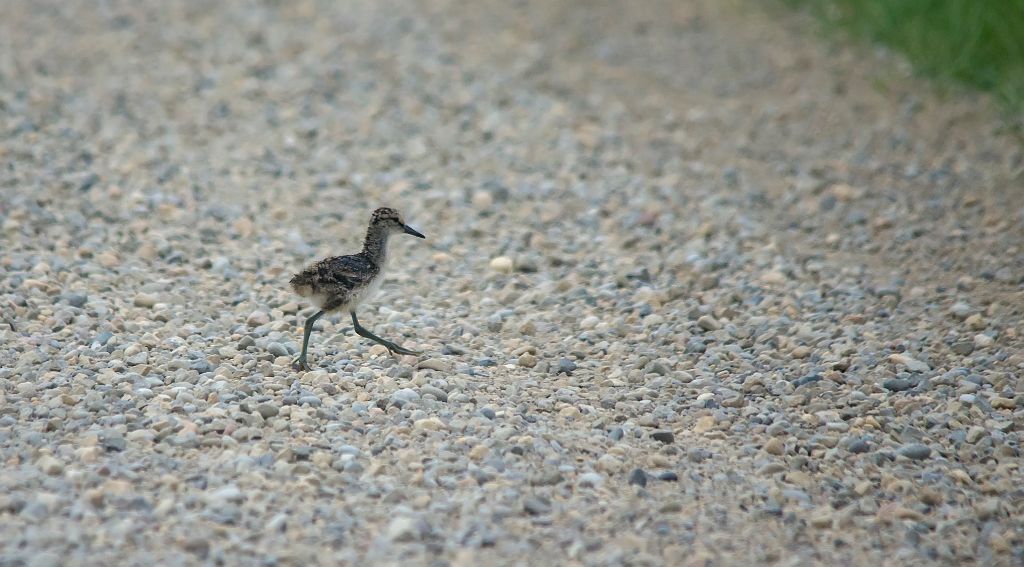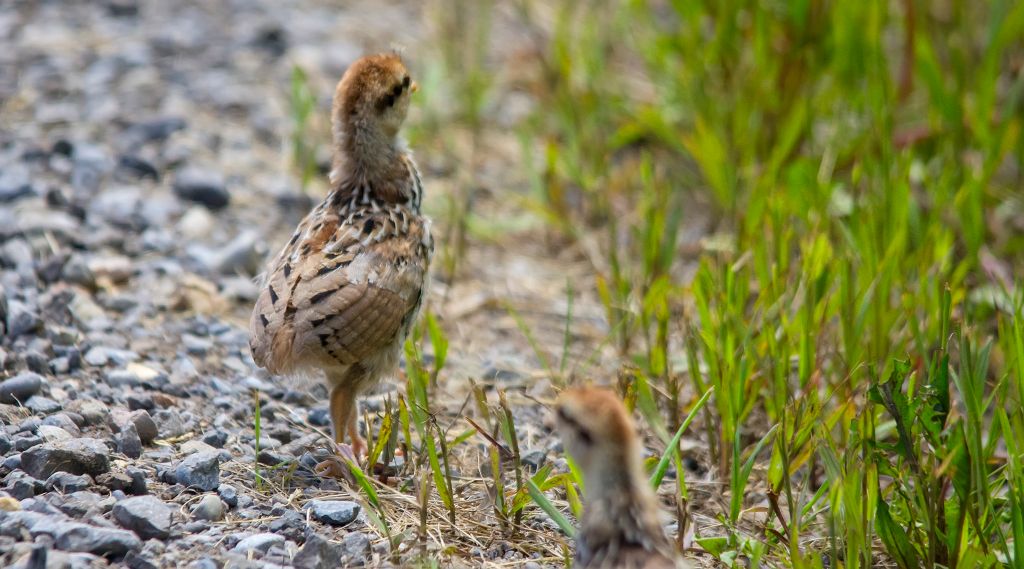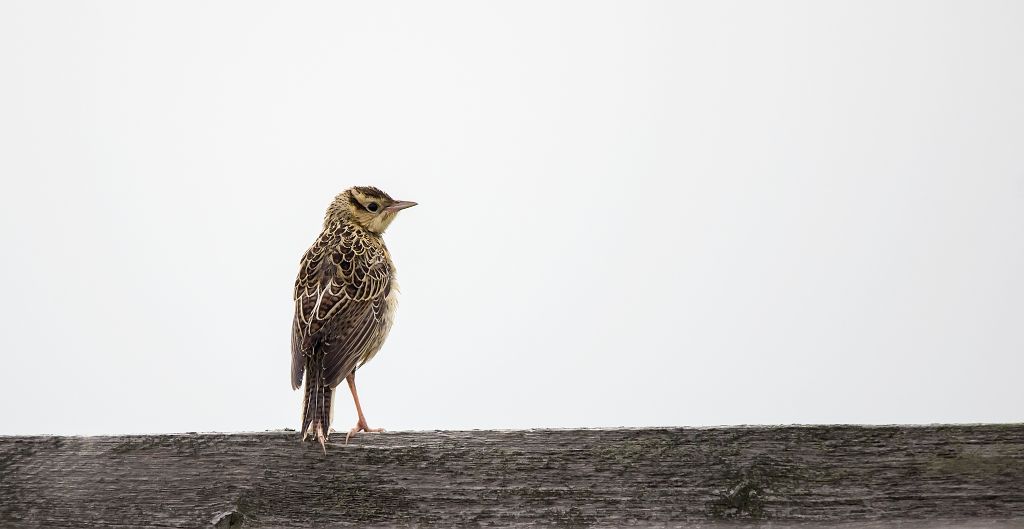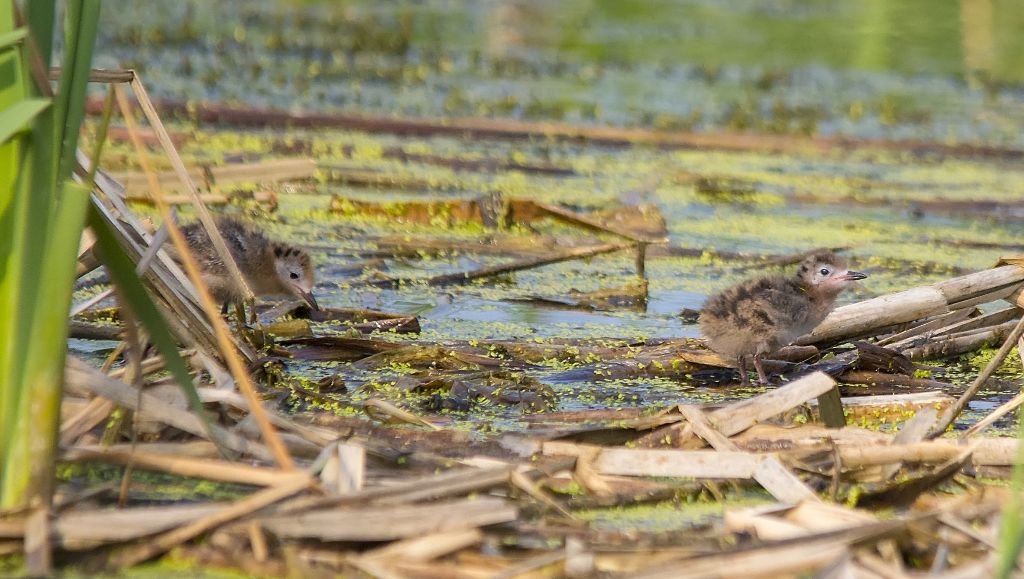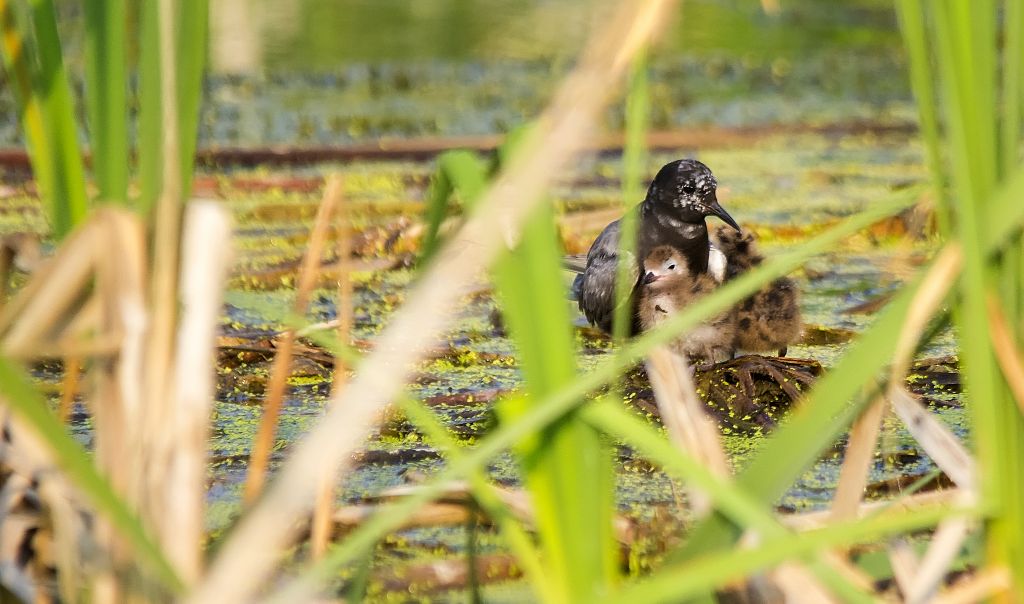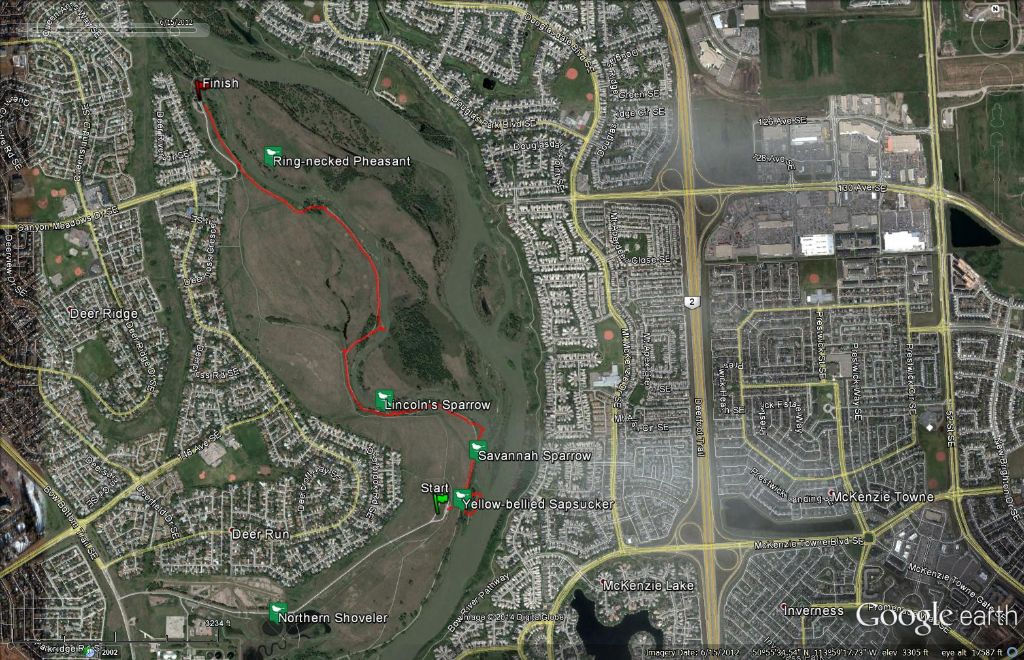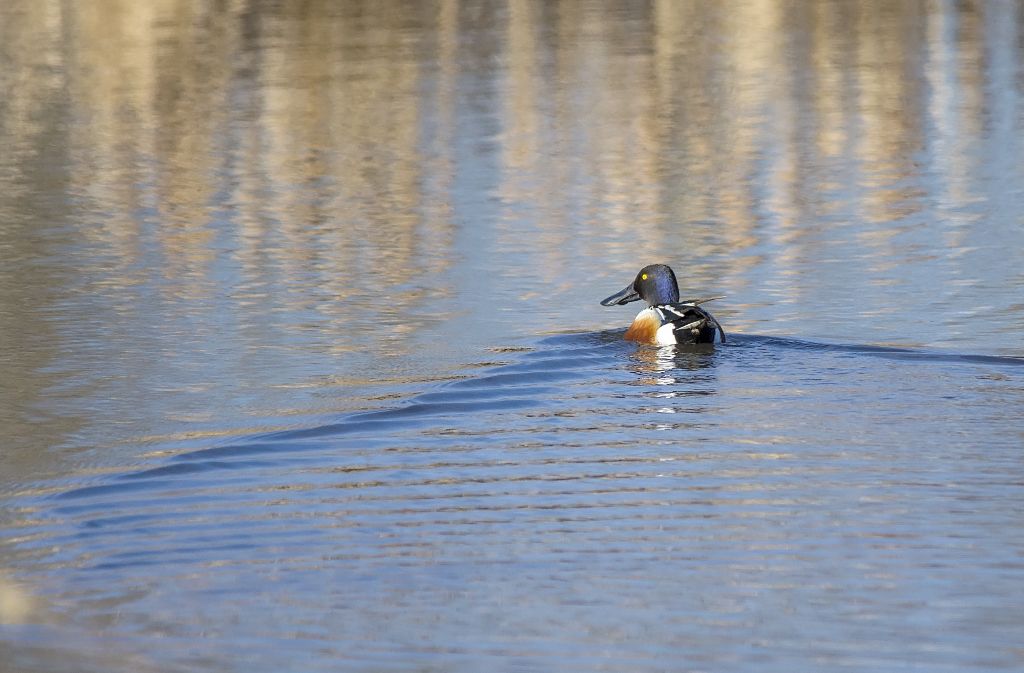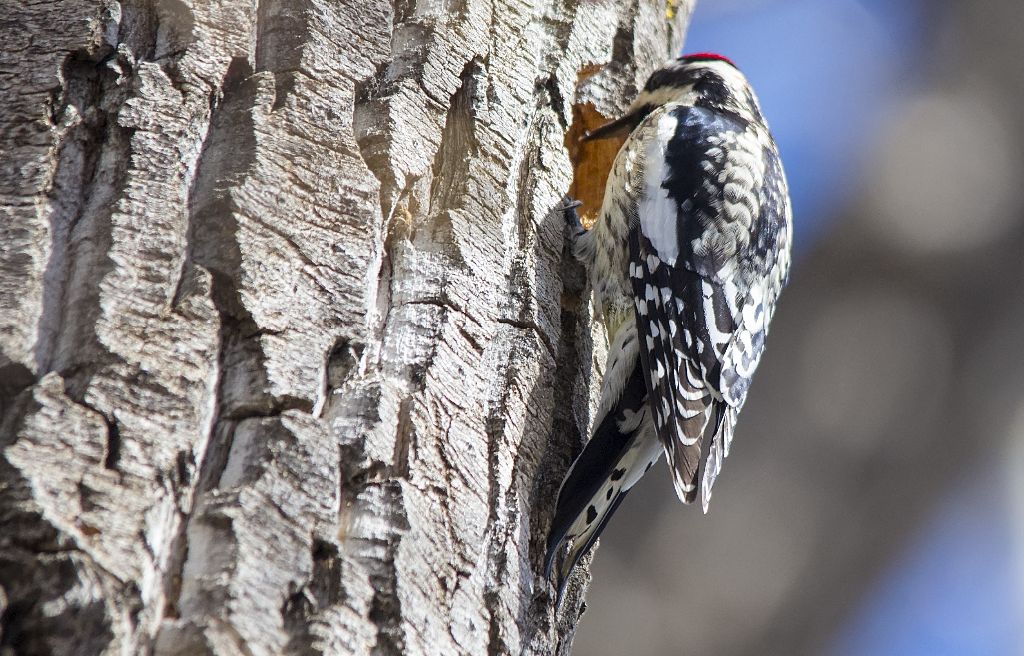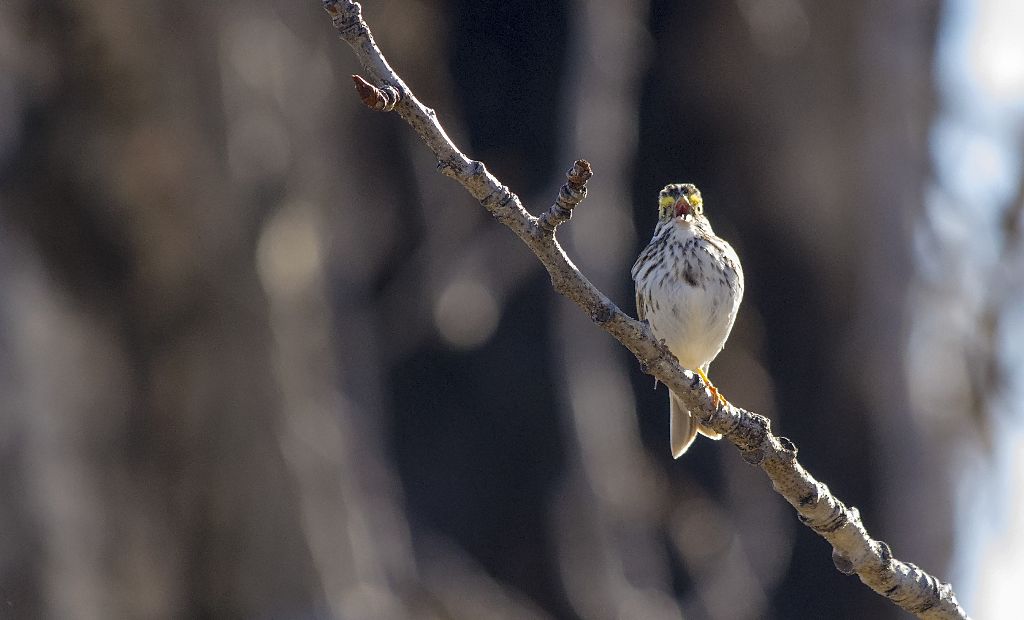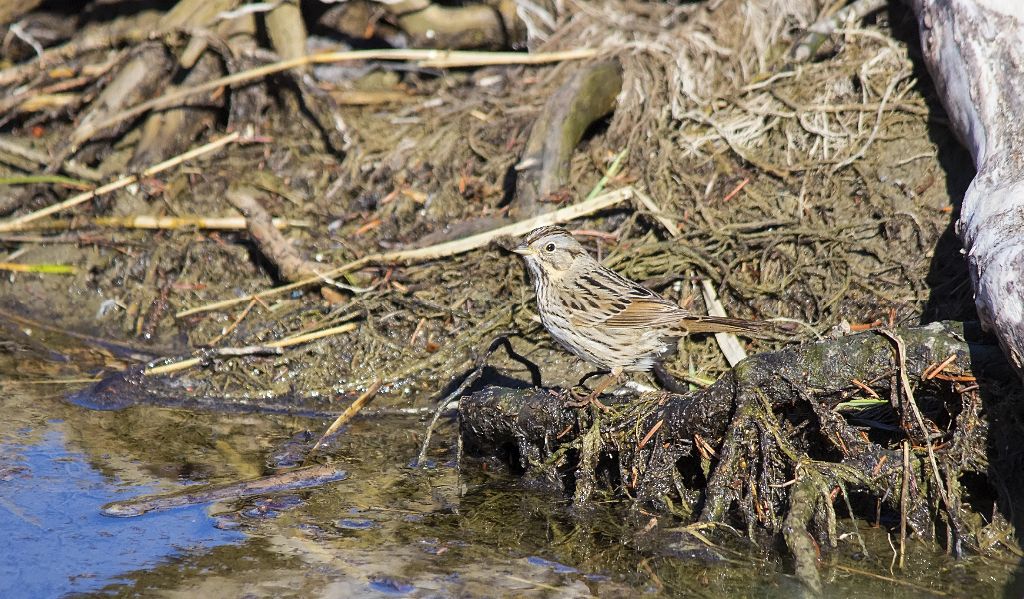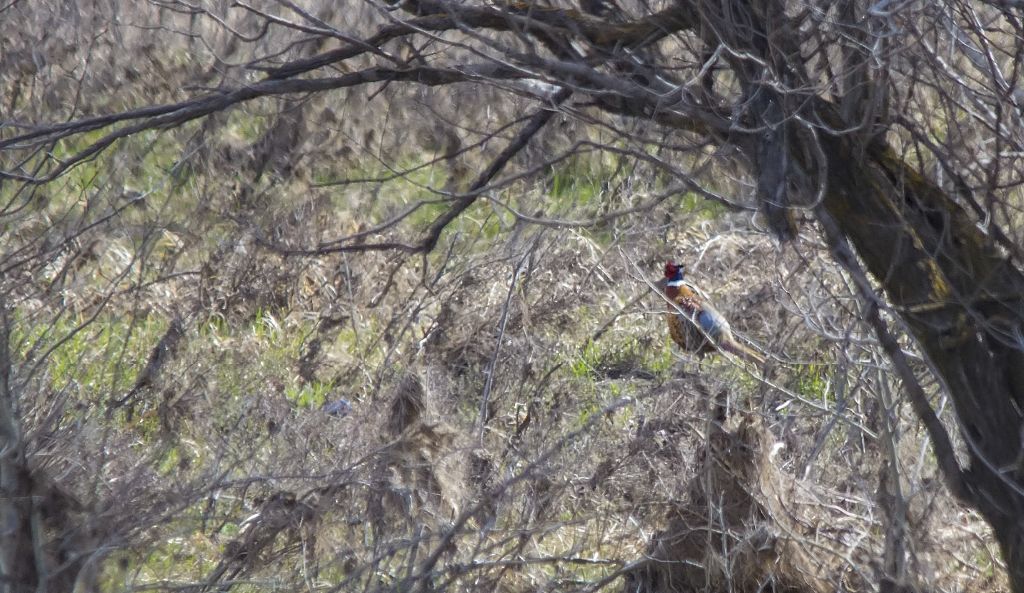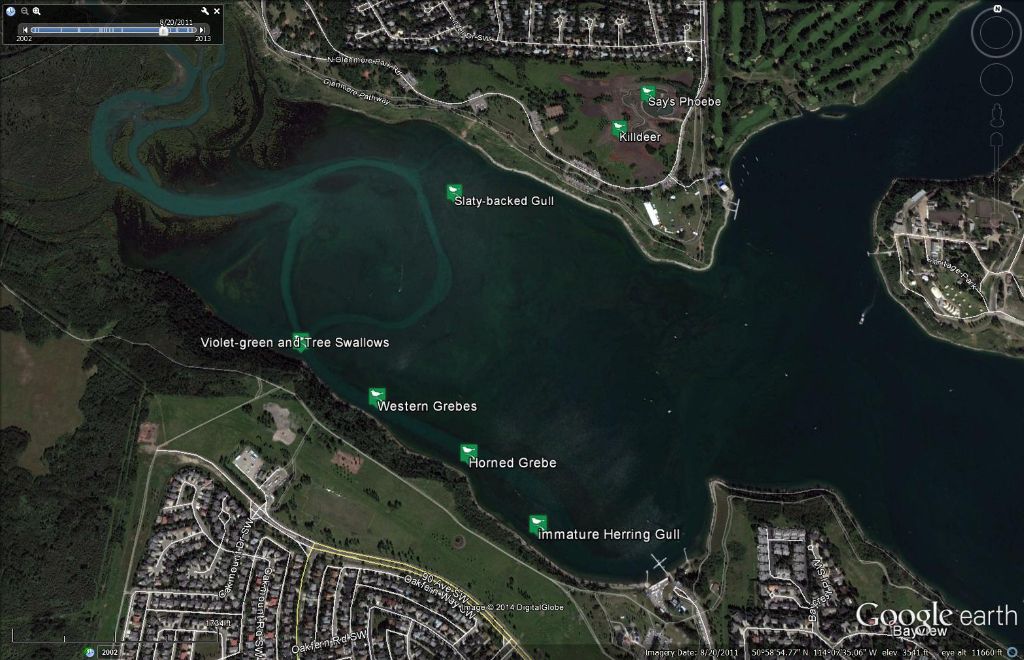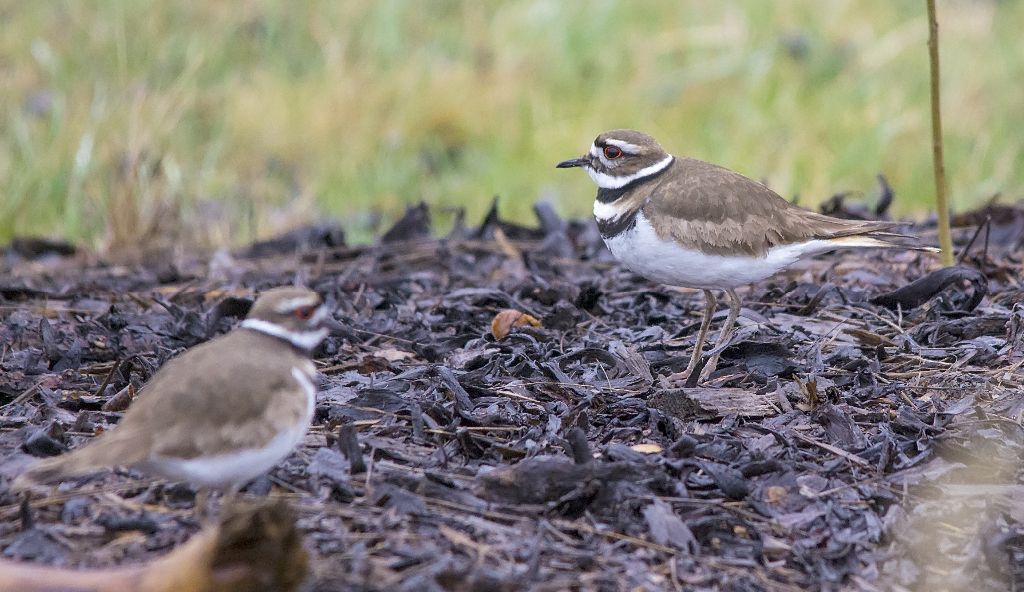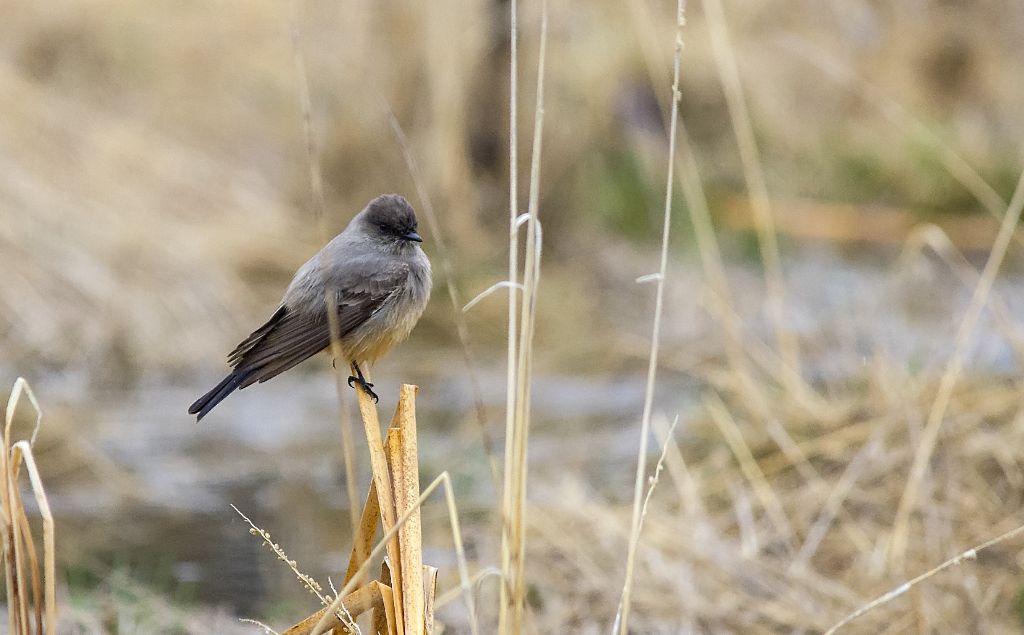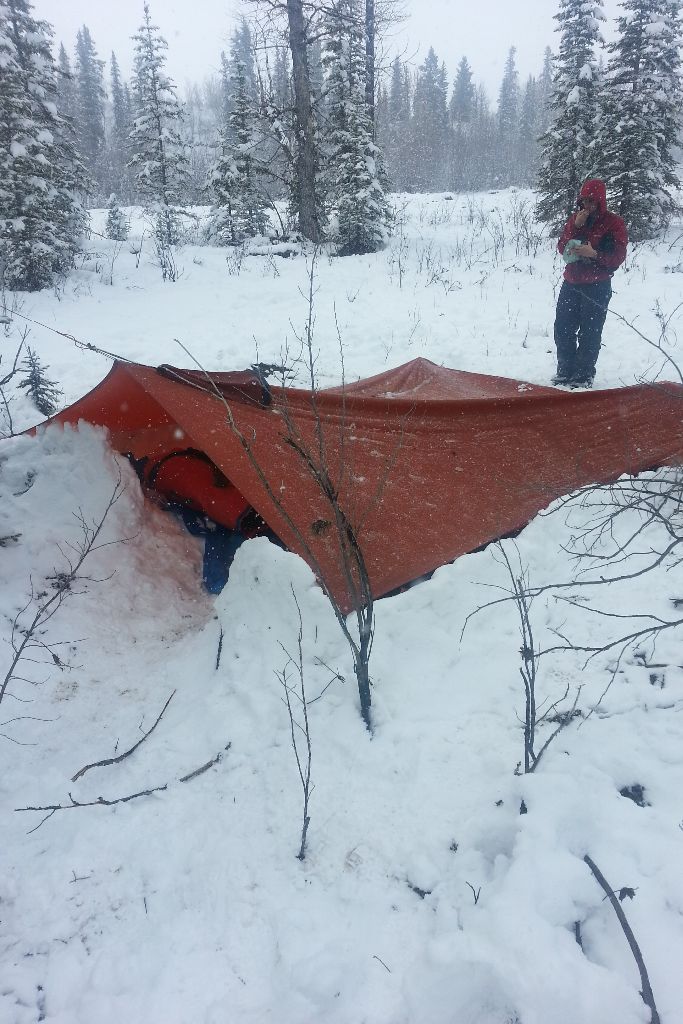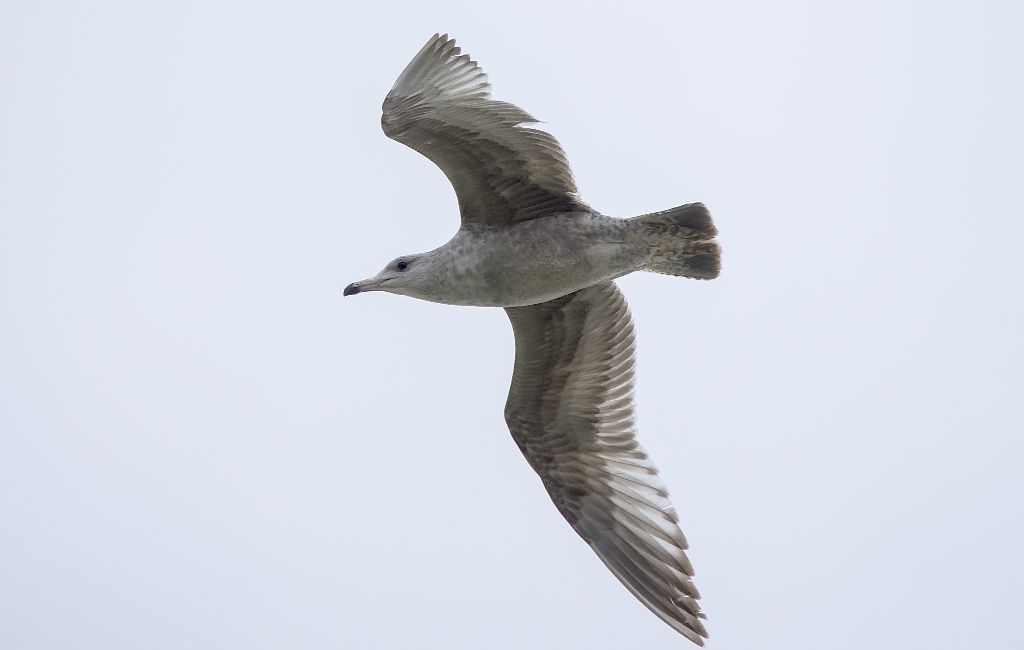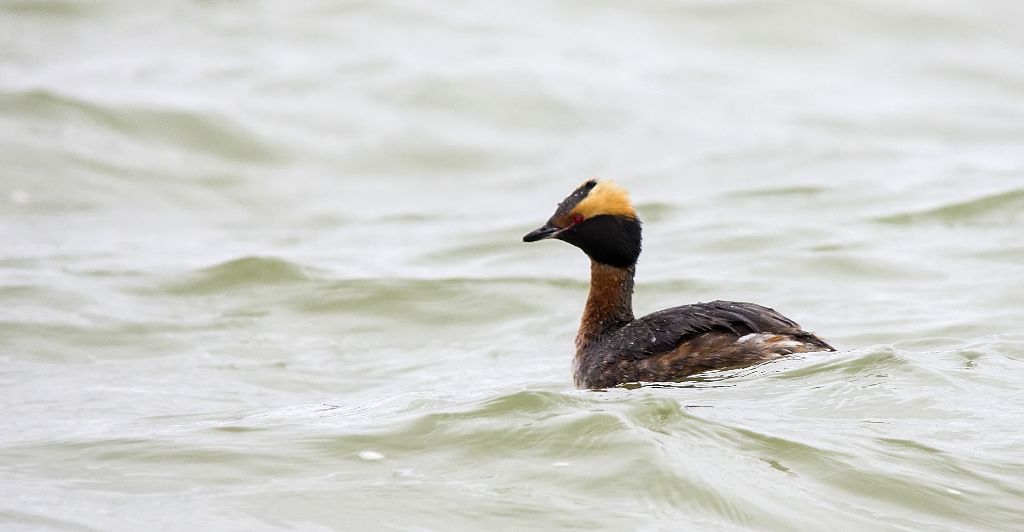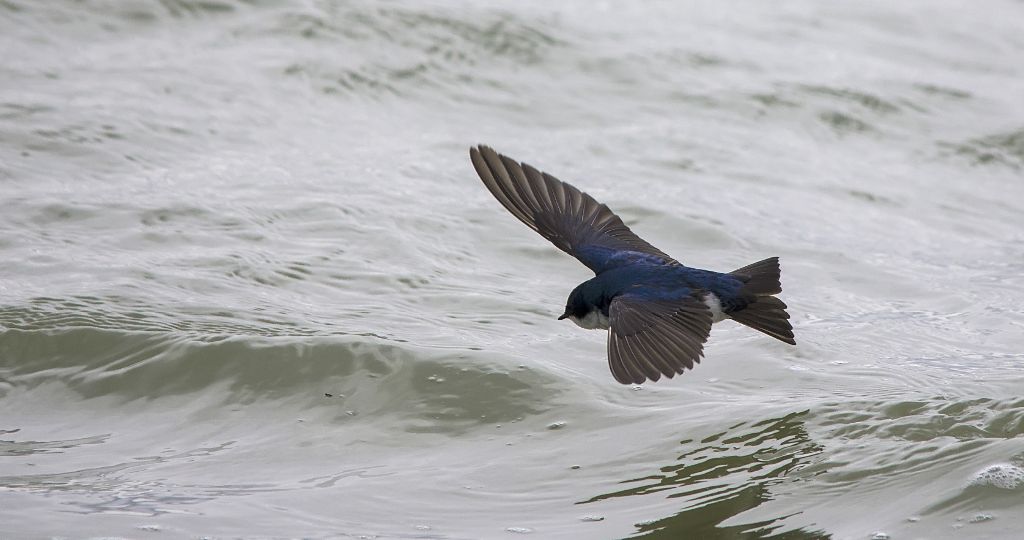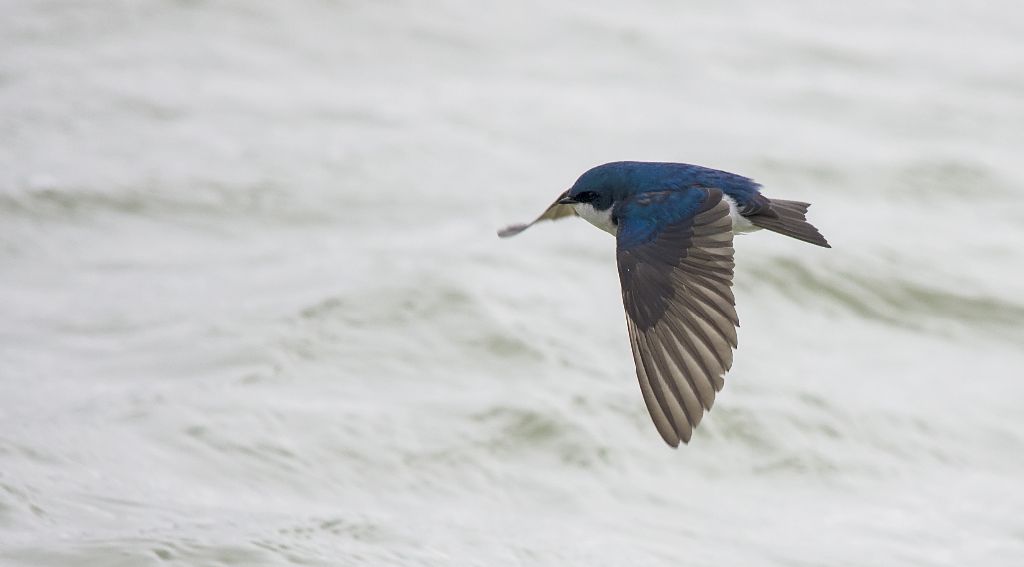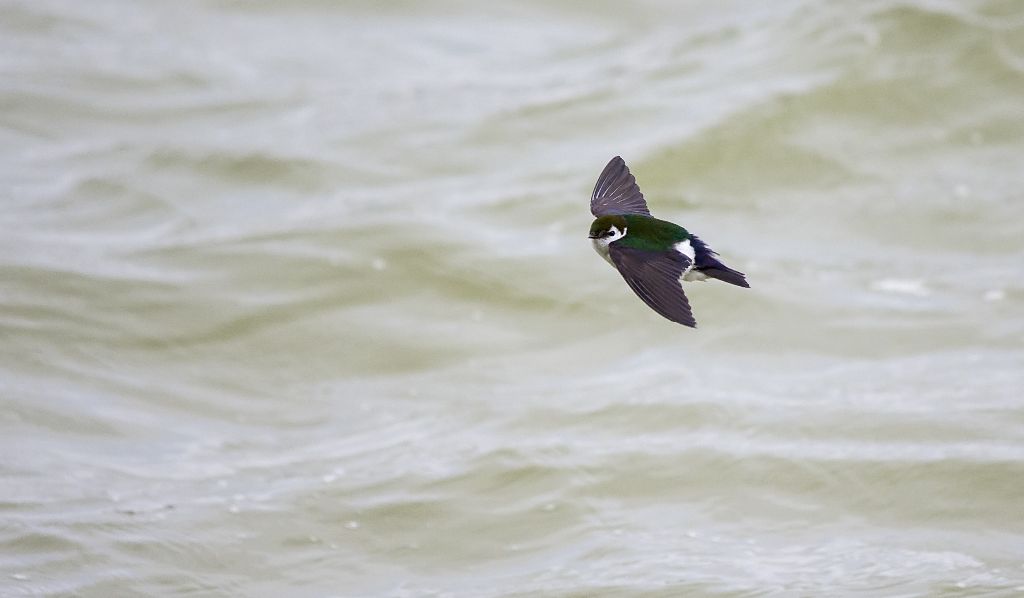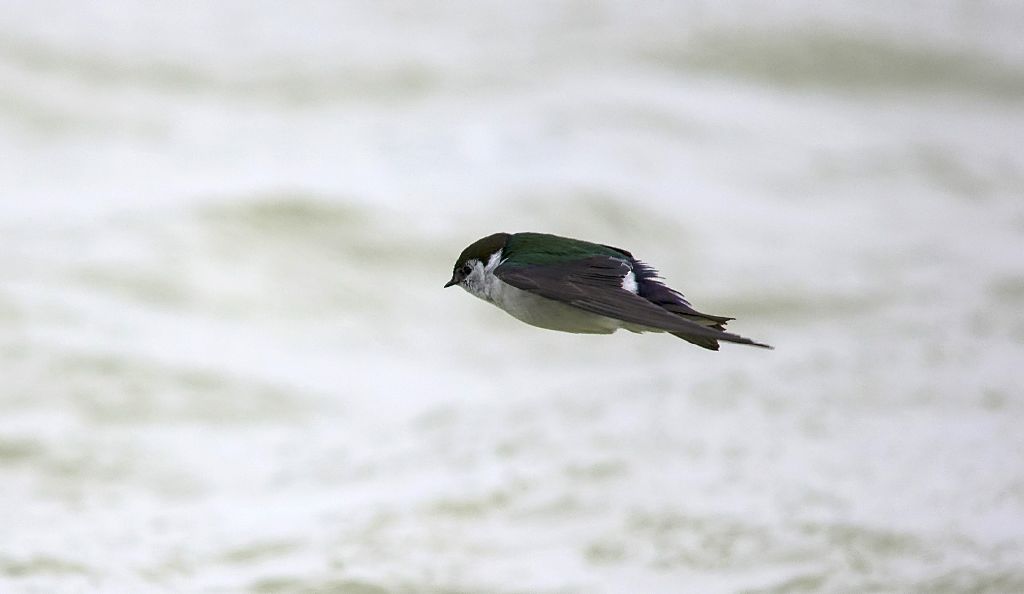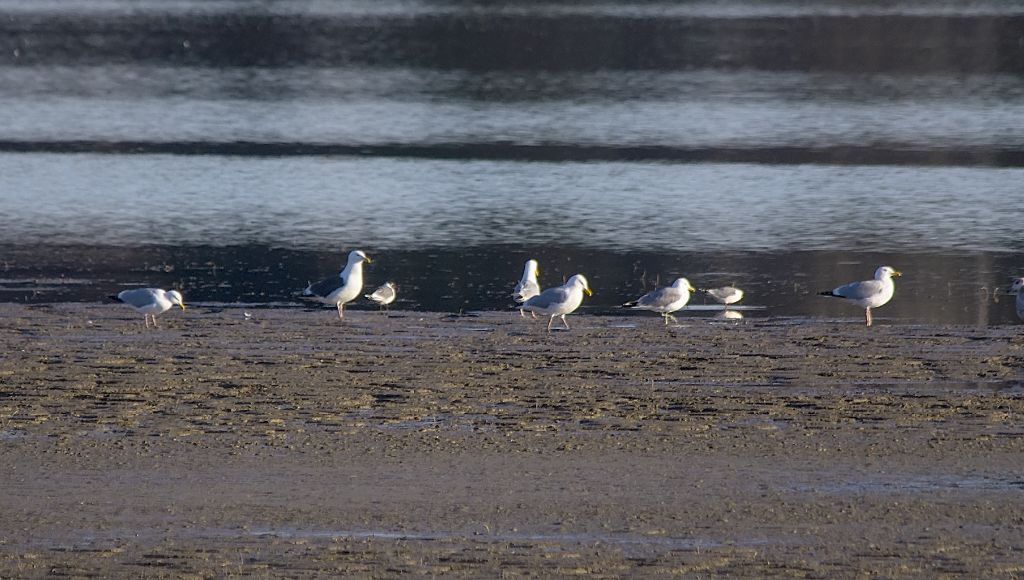Posted by Dan Arndt
Another week of spring arrivals and a few surprises at Bowmont Park made for a great outing last week. While most of the pathways near the river had been damaged by the flood, we elected to take the high road (literally!) and walk along the upper ridge of the park before descending down to the always bountiful ponds before walking back along the base of the hillside, turning up quite a few more great birds. Enjoy!
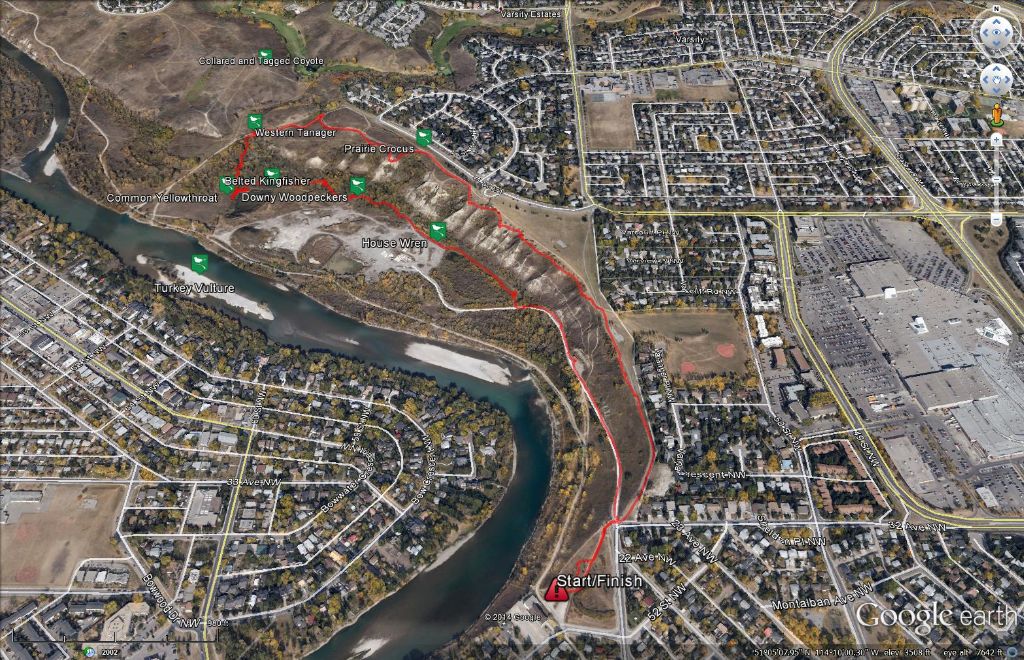
Bowmont Park
May 18, 2014
While we are always on the lookout for any number of bird species, it’s always really nice to find some flowers in bloom. This group of Prairie Crocus was one of the few we saw on this hillside, and from what others in the group mentioned, they were blooming a little late!
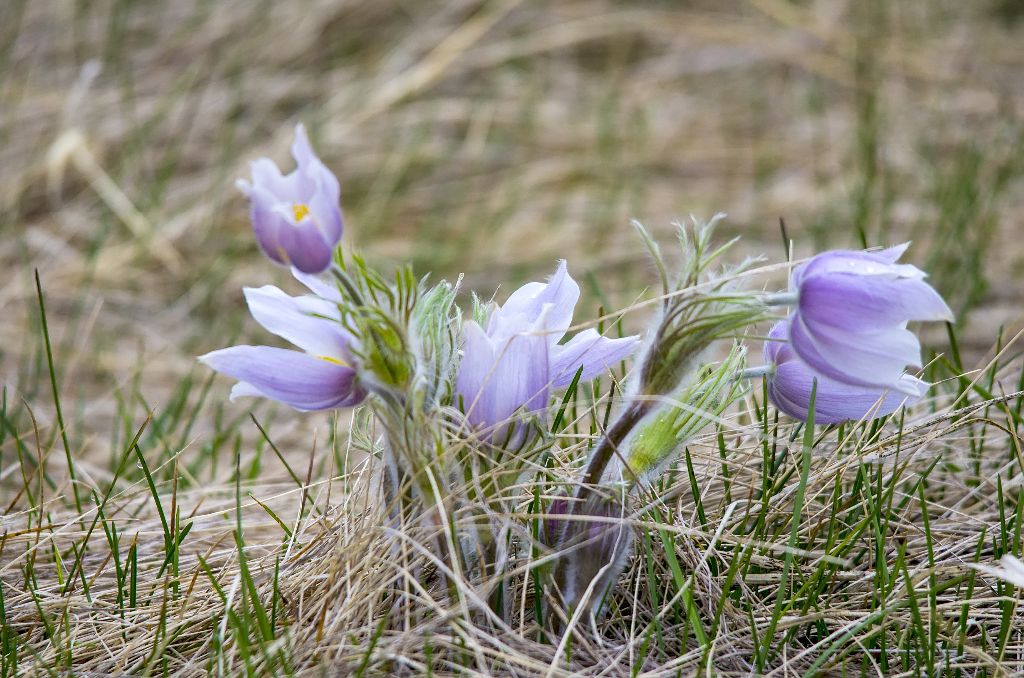
Prairie Crocus
Pentax K-5 + Sigma 150-500@500mm
1/400sec., ƒ/6.3, ISO 400
There was another group of Say’s Phoebes at the west end of the upper slope, but something on the horizon caught my eye flying down the Bow River being harassed by a group of American Crows. I had initially thought it was just another Common Raven, like we’d seen before. but as we watched the crows trail off and leave this soaring bird to close on us, we noticed white primaries, a pink head, and that is seemed really intent on simply soaring above either the Bow River, or Highway 1 before spiraling up and out of sight on a thermal. It was an unmistakable bird, but not one I’ve seen often around Calgary, and never before within the city limits. A Turkey Vulture!
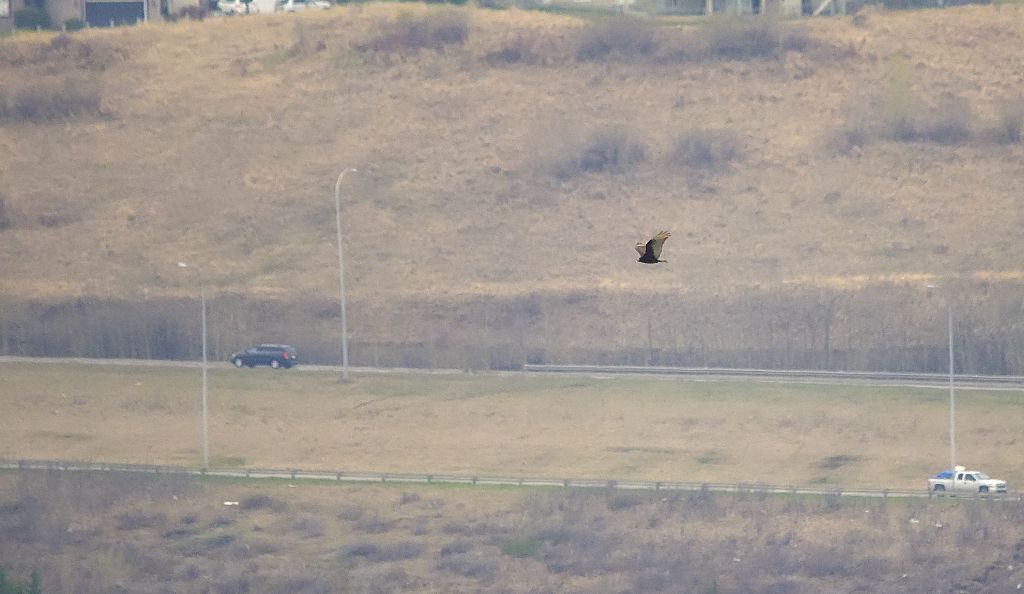
Turkey Vulture
Pentax K-5 + Sigma 150-500@500mm
1/1000sec., ƒ/6.3, ISO 2500
This particular hillside was great for our group, as we also spotted this urbanized coyote in the distance, and when we reviewed our photos afterwards, noted that it was tagged and radio-collared, likely as part of this study being put on by the City of Calgary and the University of Calgary.
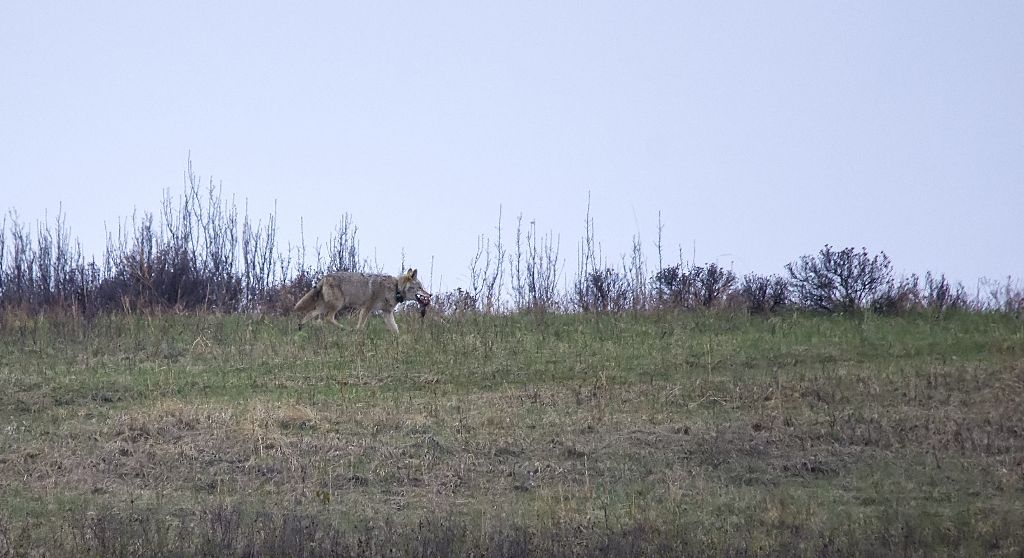
Coyote
Pentax K-5 + Sigma 150-500@500mm
1/1250sec., ƒ/6.3, ISO 2000
We soon descended into the heavily wooded pathways down below and were completely pleased with the next group that popped up that have been seen in huge numbers around the Calgary area this spring, the Western Tanager. Both males and females in equal number, this group of four flitted about above us, and a few of them even came really quite close to provide great looks!
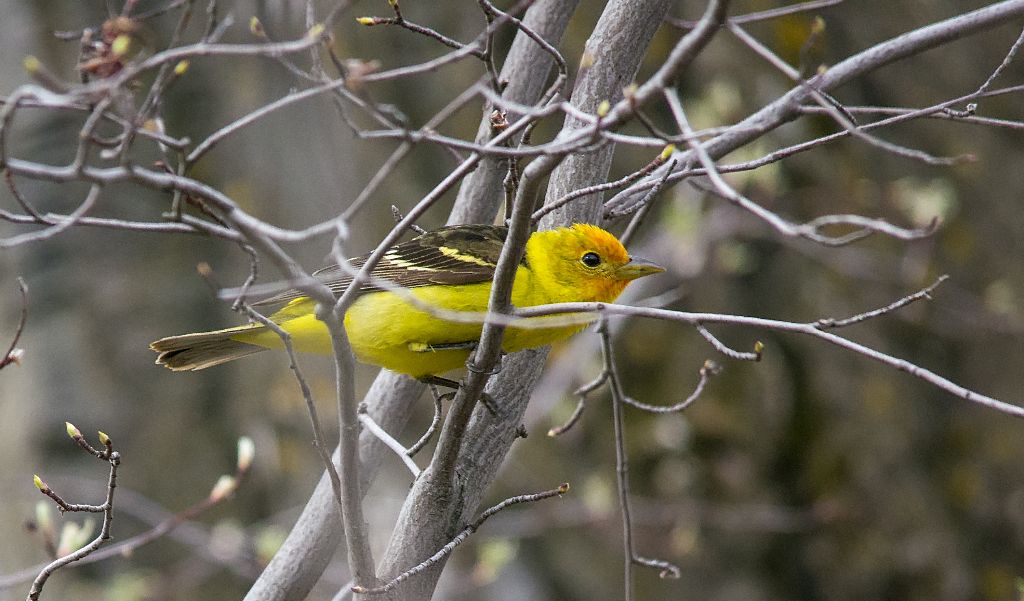
Western Tanager
Pentax K-5 + Sigma 150-500@500mm
1/1250sec., ƒ/6.3, ISO 3200
So after some good time spent with these beautiful, colorful birds, we headed to the ponds. A kindly Belted Kingfisher flew from perch to perch, giving its signature rattling call while hunting for minnows in this well established pond. Just as we were preparing to leave, a Common Yellowthroat (which we saw here last year as well) decided to make a brief call and pop out to the pond and take a drink!
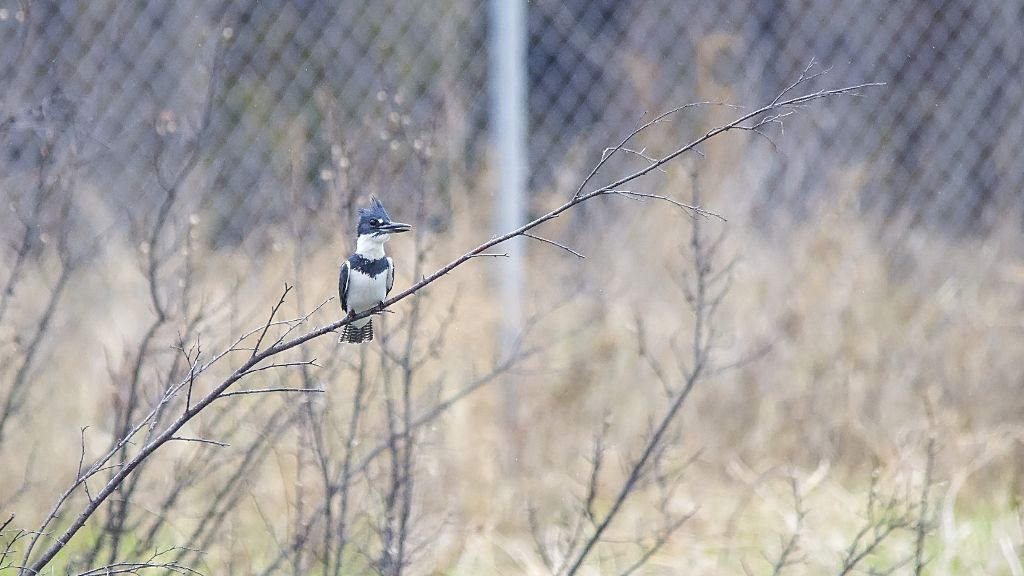
male Belted Kingfisher
Pentax K-5 + Sigma 150-500@500mm
1/1250sec., ƒ/6.3, ISO 2500
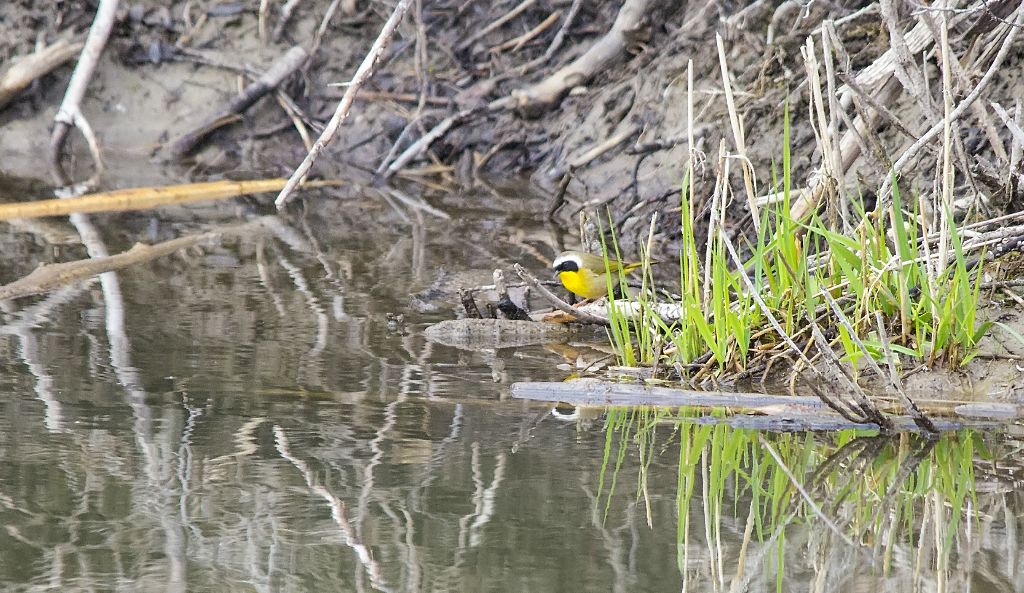
Common Yellowthroat
Pentax K-5 + Sigma 150-500@500mm
1/1250sec., ƒ/6.3, ISO 3200
Another traipse through the woods near the ponds turned up a few more Western Tanagers, a Cooper’s Hawk sitting quietly on her nest, and this pair of Downy Woodpeckers who are well on their way to starting a family of their own.
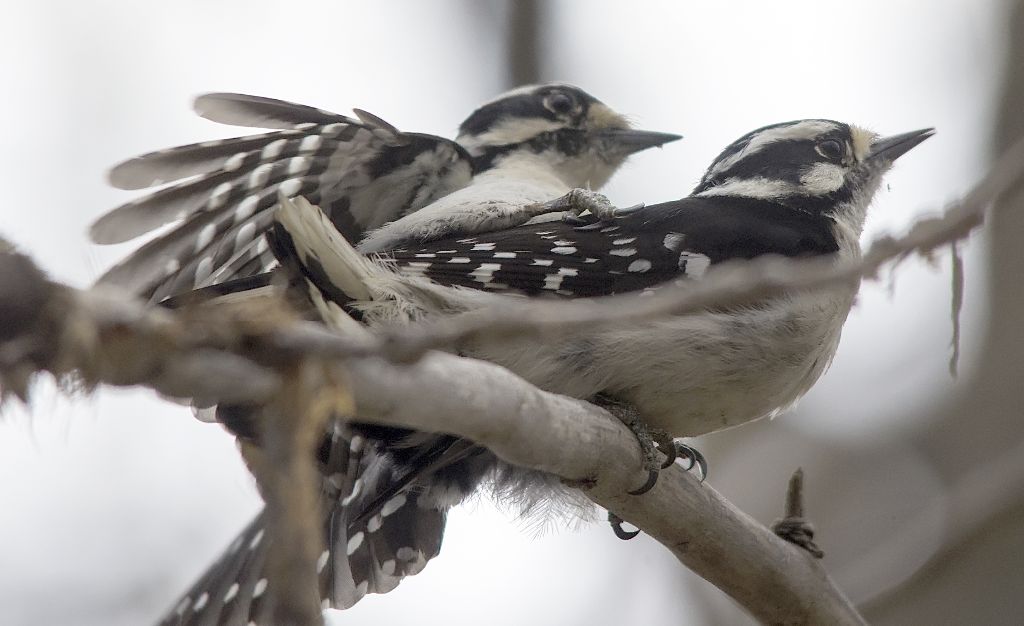
Downy Woodpeckers
Pentax K-5 + Sigma 150-500@500mm
1/1250sec., ƒ/6.3, ISO 800
And as a great end to a great walk, we managed to come across our first House Wren of the year as well, singing in the trees nearby, and as we approached, she decided to come out and tell us exactly how she felt about us being nearby!
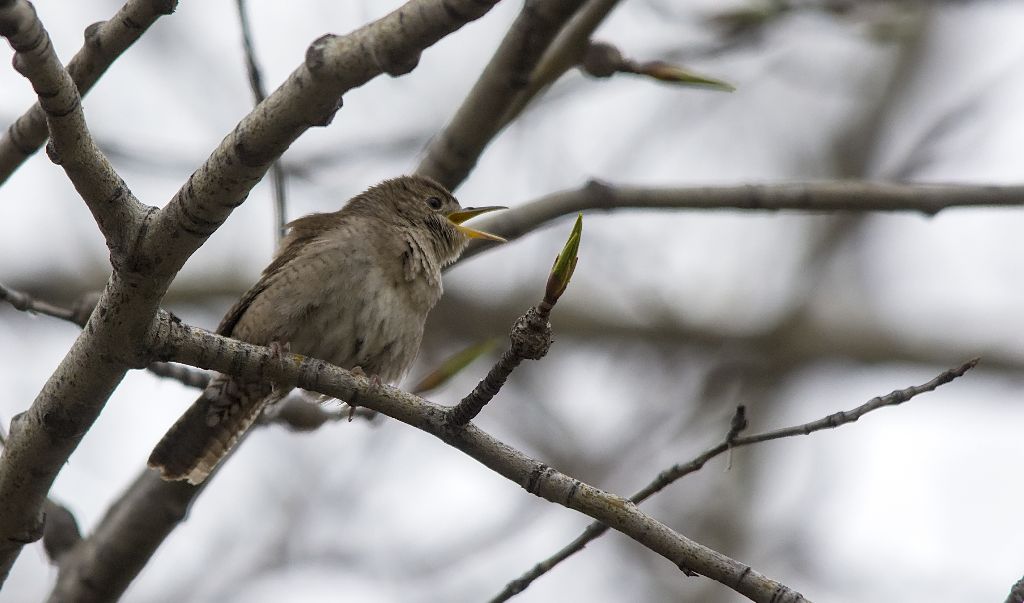
House Wren
Pentax K-5 + Sigma 150-500@500mm
1/1250sec., ƒ/6.3, ISO 1000
Thanks again for reading, and good birding! Have a great week!
